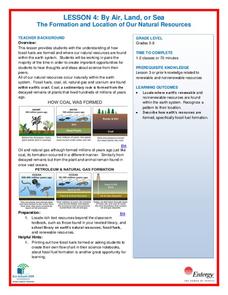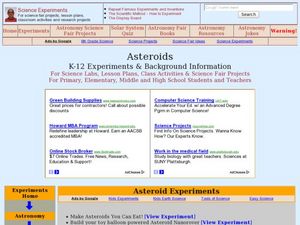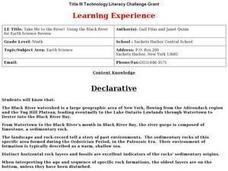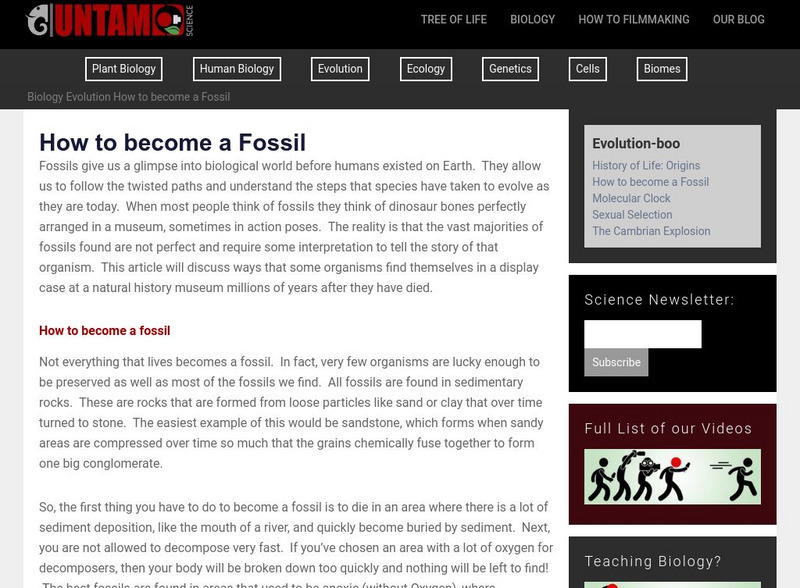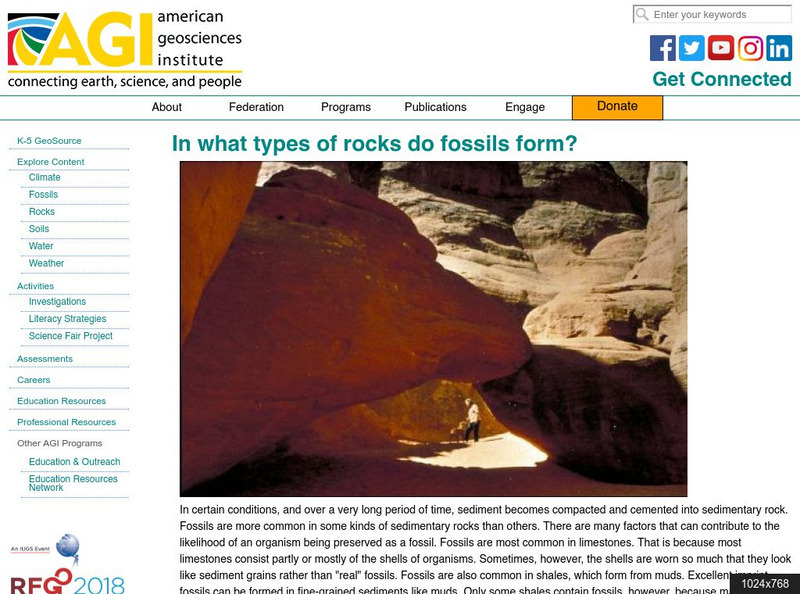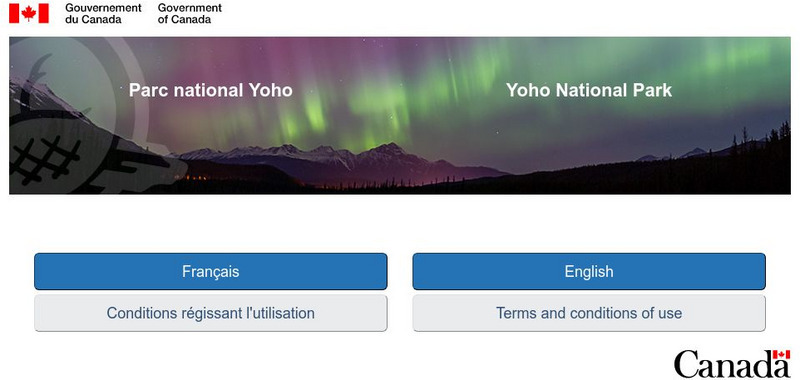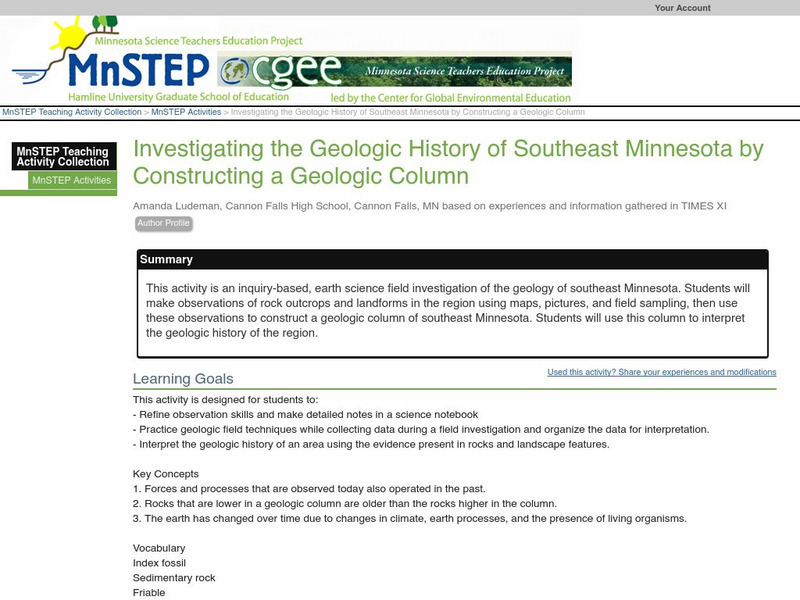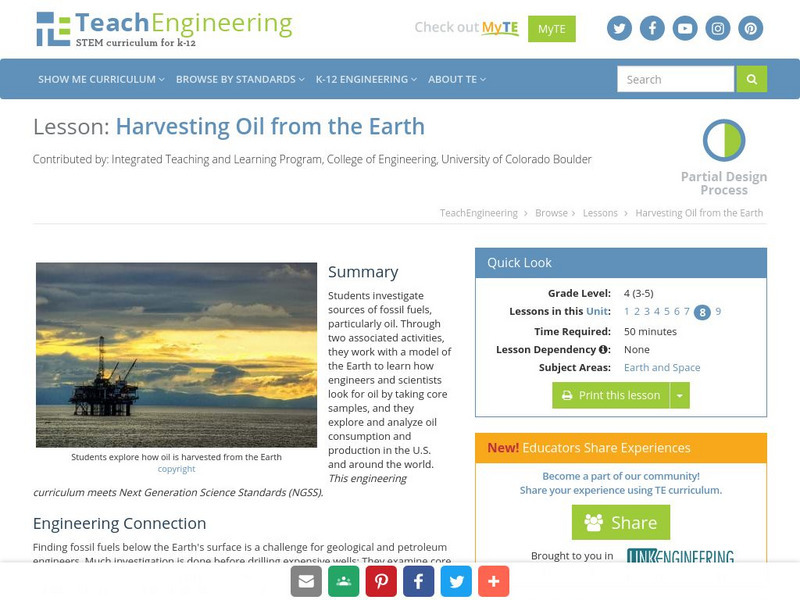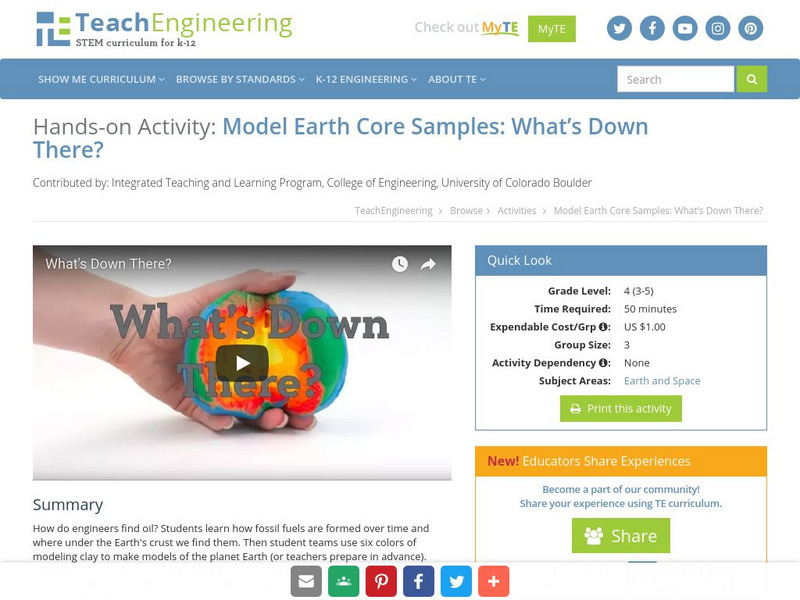Curated OER
Earth's Atmosphere
This simple presentation sports a timeline of the last 400 million years. Click by click, the condition and developments in Earth's atmosphere appear along the timeline. This is a nifty PowerPoint that you could use as you teach about...
Curated OER
Climate Change: Carbon Cycle
Students explore the carbon cycle. In this carbon cycle lesson, students discuss the four main reservoirs where carbon is stored and then discover the process through which each reservoir absorbs and releases CO2. This lesson includes a...
Curated OER
Global Change — Change and Cycles Where Land, Air and Water Meet
Young scholars participate in an experiment to define a parts-per-billion solution. In this ecology lesson, students select a second substance to create a parts-per-billion solution and observe and record their results. Young scholars...
Curated OER
Creating Journals
Students take a virtual tour of Yosemite and selects photographs to use in their journal.
National Wildlife Federation
By Air, Land, or Sea: The Formation and Location of Our Natural Resources
Coal forms from the ancient remains of plants that were alive on Earth before the dinosaurs! Scholars use their t-charts from the previous activity over resources and research to determine if their information is correct. Through...
Curated OER
You are the Archaeologist
Kids can practice their observation and evidence-based argument skills with a fun and engaging look at artifacts. With a given set of objects, each child will sketch and describe the object, then partners work together to determine...
Curated OER
Asteroids
Students examine a potential asteroid impact site. They describe evidence and theories for extinction events.
Curated OER
From Lake to Lake
Fourth graders investigate the formation of the Great Salt Lake. They conduct research using a variety of resources. The information is used to construct a timeline of the history. Each phase of history should include facts and...
Curated OER
Take Me to the River! Using the Black River for Earth Science Review
Ninth graders use maps to identify landscape regions and drainage patterns producing the Black River. They create PowerPoint presentations pertaining to the Black River watershed, its geologic history and highlighting safe rafting...
Curated OER
Student Guide: Evolution Videodisk from Videodiscovery
Students use this worksheet with the videodisk from Video discovery titled Evolution: Inquiries into Biology and Earth Science.Written because there is no computerized control program available, it is to be used with a standard videodisk...
Texas Education Agency
Texas Gateway: Sedimentary Rocks and Fossil Fuels
Learn about the rock cycle, sedimentary rocks, and fossil fuels in this tutorial.
Utah Education Network
Uen: Mineral Replacement in Fossil Formation
Activity demonstrates two ways fossils are formed.
Untamed Science
Untamed Science: Biology: Evolution: How to Become a Fossil
Learn about what a fossil is, the different types that scientists use for study, and processes that form them. [2:57]
Science Buddies
Science Buddies: Sorting Out Sedimentation
Sedimentary rock forms in layers that are deposited one after the other over long periods of time. Oftentimes, sedimentary rock contains fossils and other debris that are deposited within the layers. Use this experiment to investigate...
American Geosciences Institute
American Geosciences Institute: In What Types of Rocks Do Fossils Form?
Learn about the types of rocks where fossils can form.
Other
Parks Canada: Yoho National Park: The Burgess Shale
First discovered by Charles Walcott in 1909, the Burgess Shale is a UNESCO World Heritage site containing fossils dating back to the Cambrian period, 505 million years ago. This site provides the history of this area and information on...
Science Education Resource Center at Carleton College
Serc: Investigating the Geologic History of Southeast Minnesota
This activity is an inquiry-based, earth science field investigation of the geology of southeast Minnesota. Students will make observations of rock outcrops and landforms in the region using maps, pictures, and field sampling, then use...
Indiana University
Indiana Univ. Bloomington:geo Notes: Conodonts: Microfossils of Distinction [Pdf]
Presents some facts about conodonts, extinct eel-like animals whose fossils have been found in Indiana's marine sedimentary rocks. Their important role in geologic research is also discussed.
TeachEngineering
Teach Engineering: Harvesting Oil From the Earth
In this lesson, students investigate sources of fossil fuels, particularly oil. Students will learn how engineers and scientists look for oil by taking core samples from a model of the Earth. Also, students will explore and analyze oil...
TeachEngineering
Teach Engineering: What's Down There?
During this activity, students will learn how oil is formed and where in the Earth we find it. Students will take a core sample to look for oil in a model of the Earth. They will analyze their sample and make an informed decision as to...
Energy for Sustainable Development
Esd Bulgaria: Kids & Energy: Coal
Coal is a combustible black or brownish-black sedimentary rock composed mostly of carbon and hydrocarbons. It is the most abundant fossil fuel produced in the United States. Coal is also a nonrenewable energy source because it takes...






